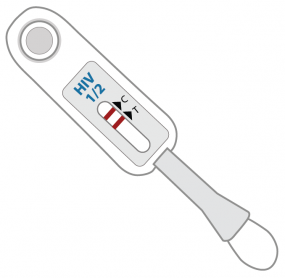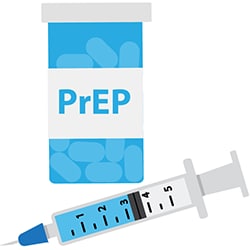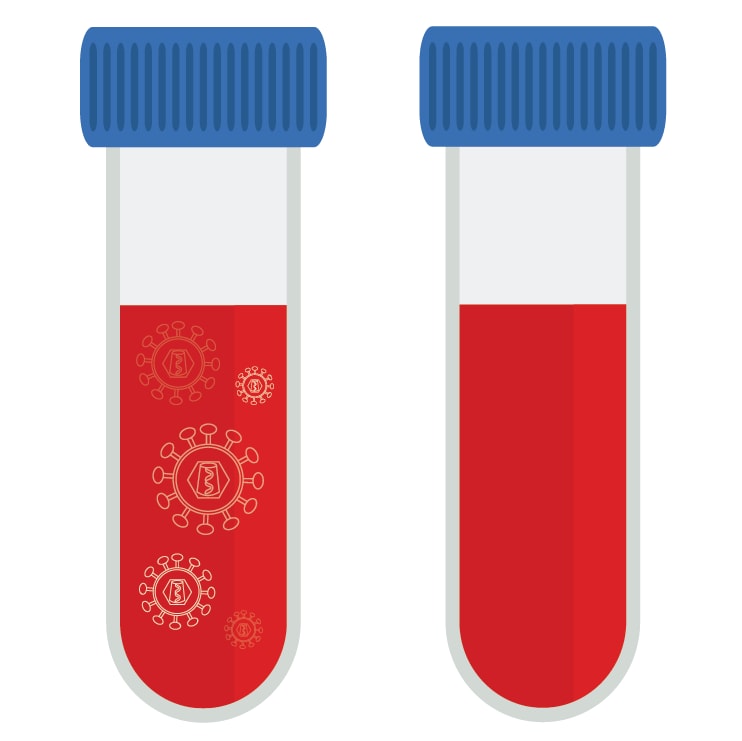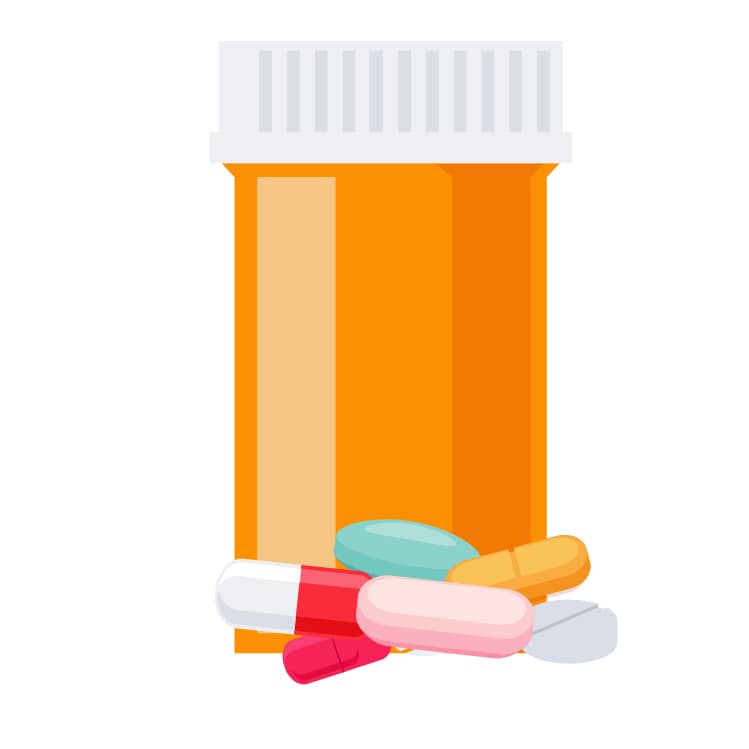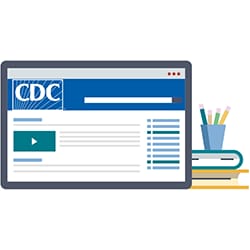El VIH y las personas transgénero: Desafíos para la prevención
Hay muchos desafíos para la prevención que podrían afectar los resultados de salud relacionados con el VIH para algunas personas transgénero.
Discriminación transfóbica (transfobia), que ocurre cuando las personas transgénero enfrentan estigmatización y opresión dirigidas a ellas. Los hallazgos del informe del Sistema Nacional de Vigilancia del Comportamiento Relacionado con el VIH de los CDC (NHBS) muestra que la mayoría de las mujeres transgénero han experimentado alguna forma de abuso o acoso debido a su identidad de género o su presentación de esta. Esto podría afectar negativamente su acceso a las pruebas del VIH, el cuidado o la obtención del tratamiento.
El estigma por el VIH puede impedir que las personas transgénero busquen saber si tienen el VIH. Un estudio halló que el estigma anticipado por el VIH se asociaba a un retraso en la realización periódica de la prueba del VIH en algunas mujeres transgénero jóvenes.
El racismo y la discriminación podrían aumentar los comportamientos de riesgo relacionados con el VIH y llevar a disparidades de salud en cuanto al VIH. Según un estudio, las mujeres transgénero jóvenes pertenecientes a minorías experimentaron discriminación racial con más frecuencia que las mujeres transgénero jóvenes de raza blanca. Los problemas relacionados con el racismo y la discriminación —que incluyen acceso limitado a atención médica, empleo y vivienda— pueden aumentar el riesgo de contraer el VIH y afectar la salud y el bienestar de las personas transgénero.
Las probabilidades de buscar y obtener servicios de prevención y tratamiento del VIH podrían ser menores en los jóvenes transgénero o de otros géneros pertenecientes a grupos minoritarios. Un estudio halló que era más probable que los jóvenes transgénero faltaran a sus citas de atención médica si no se sentían respaldados por la afirmación médica de su género o si los habían tratado de manera negativa por su identidad de género. La compresión de estos factores podría ayudar a mejorar la búsqueda y obtención de servicios de prevención y tratamiento del VIH de los jóvenes transgénero.
Podrían necesitarse intervenciones multinivel para las personas transgénero a fin de abordar las disparidades. Según un análisis del 2017, para abordar las disparidades en el VIH, se necesitan intervenciones multinivel basadas en la evidencia que traten los riesgos estructurales, biomédicos y conductuales de infección por el VIH entre las mujeres y los hombres transgénero. Se ha encontrado que las intervenciones conductuales basadas en la evidencia para las mujeres transgénero han sido eficaces; estas se incluyen en el Compendio de intervenciones basadas en la evidencia y mejores prácticas para la prevención del VIH de los CDC.
Al haber necesidades de afirmación de género no satisfechas, las cuales incluyen no recibir hormonas, el tratamiento del VIH podría verse afectado o retrasado. Un estudio halló que las necesidades quirúrgicas no satisfechas y no recibir tratamiento con hormonas se asociaban significativamente a interrupciones en el tratamiento del VIH. De manera similar, otro estudio halló que el uso de hormonas reducía las probabilidades de no estar en tratamiento para el VIH.
- CDC. HIV infection, risk, prevention, and testing behaviors among transgender women–National HIV Behavioral Surveillance–7 U.S. Cities, 2019-2020 [PDF - 2 MB]. HIV Surveillance Special Report 2021.
- CDC. Diagnoses of HIV infection in the United States and dependent areas, 2018 (updated). HIV Surveillance Report 2020;31.
- CDC. Behavioral and clinical characteristics of persons with diagnosed HIV infection—Medical Monitoring Project, United States, 2018 cycle (June 2018–May 2019) [PDF - 905 KB]. HIV Surveillance Special Report 2020;25.
- CDC. Selected national HIV prevention and care outcomes [PDF - 2 MB] (slides).
- Becasen JS, Denard CL, Mullins MM, Higa DH, Sipe TA. Estimating the prevalence of HIV and sexual behaviors among the US transgender population: a systematic review and meta-analysis, 2006–2017. Am J Public Health 2018. e1-e8. PubMed abstract.
- Baral SD, Poteat T, Strömdahl S, Wirtz AL, Guadamuz TE, Beyrer C. Worldwide burden of HIV in transgender women: a systematic review and meta-analysis. Lancet Infect Dis 2013;13(3):214-22. PubMed abstract.
- Brennan J, Kuhns LM, Johnson AK, Belzer M, Wilson EC, Garofalo R, et al. Syndemic theory and HIV-related risk among young transgender women: the role of multiple, co-occurring health problems and social marginalization. Am J Public Health 2012;102(9):1751-7. PubMed abstract.
- Herman JL, Flores AR, Brown TNT, Wilson BDM, Conron KJ (2017). Age of individuals who identify as transgender in the United States. Los Angeles, CA: The Williams Institute.
- CDC. CDC-funded HIV testing: United States, Puerto Rico, and U.S. Virgin Islands, 2015 [PDF - 2 MB]. July 2017.
- Chen S, McFarland W, Thompson HM, Raymond HF. Transmen in San Francisco: what do we know from HIV test site data?AIDS Behav 2011;15:659-62. PubMed abstract.
- Clark H, Babu AS, Wiewel EW, Opoku J, Crepaz N. Diagnosed HIV infection in transgender adults and Adolescents: Results from the National HIV Surveillance System, 2009-2014. PubMed abstract.
- De Santis JP. HIV infection risk factors among male-to-female transgender persons: a review of the literature. J Assoc Nurses AIDS Care 2009;20(5):362-72. PubMed abstract.
- Flores AR, Herman JL, Gates GJ, Brown TNT. How many adults identify as transgender in the United States? Los Angeles, CA: The Williams Institute. June 2016.
- Garofalo R, Johnson AK, Kuhns LM, Cotton C, Joseph H, Margolis A. Life Skills: evaluation of a theory-driven behavioral HIV prevention intervention for young transgender women. J Urban Health 2012;89(3):419-31. PubMed abstract.
- Herbst JH, Jacobs ED, Finlayson TJ, McKleroy VS, Neumann MS, Crepaz N. Estimating HIV prevalence and risk behaviors of transgender persons in the United States: a systematic review. AIDS Behav 2008;12(1):1-17. PubMed abstract.
- Hotton AL, Garofalo R, Kuhns LM, Johnson AK. Substance use as a mediator of the relationship between life stress and sexual risk among young transgender women. AIDS Educ Prev 2013;25(1):62-71. PubMed abstract.
- James SE, Herman JL, Rankin S, Keisling M, Mottet L, Anafi M. The Report of the 2015 U.S. Transgender Survey. Washington, DC: National Center for Transgender Equality; 2016.
- Meerwijk EL, Sevelius JM. Transgender population size in the United States: a meta-regression of population-based probability samples. Am J Public Health 2017; 107(2):e1-e8. PubMed abstract.
- Mizuno Y, Frazier EL, Huang P, Skarbinski J. Characteristics of transgender women living with HIV receiving medical care in the United States LGBT Health 2015;2(00):1-7. PubMed abstract.
- New York City Department of Health and Mental Hygiene. Surveillance slide sets: HIV among people identified as transgender in New York City, 2015-2019. December 2020. Accessed March 22, 2021.
- Nuttbrock L, Hwahng S, Bockting W, Rosenblum, A, Mason, M, Macri M, et al. Lifetime risk factors for HIV/sexually transmitted infections among male-to-female transgender persons. J Acquir Immun Def Syndr 2009;52(3):417–21. PubMed abstract.
- Reisner SL, Perkovich B, Mimiaga MJ. A mixed methods study of the sexual health needs of New England transmen who have sex with nontransgender men. AIDS Patient Care STDS 2010;24(8):501-13. PubMed abstract.
- Rowniak S, Chesla C, Rose CD, Holzemer WL. Transmen: the HIV risk of gay identity. AIDS Educ Prev 2011;23(6):508-20. PubMed abstract.
- Sanchez T, Finlayson T, Murrill C, Guilin V, Dean L. Risk behaviors and psychosocial stressors in the New York City House Ball community: a comparison of men and transgender women who have sex with men. AIDS Behav 2010;14:351-8. PubMed abstract.
- CDC. HIV testing among transgender women and men — 27 states and Guam, 2014–2015. MMWR 2017;66:883–887.
- Lemons A, Beer L, Finlayson T, Hubbard McCree D, Lentine D, Shouse RL. Characteristics of HIV-positive transgender men receiving medical care: United States, 2009–2014. Am J Public Health 2018;108(1):128-30. PubMed abstract.
- Reisner SL, Jadwin-Cakmak L, White Hughto JM, Martinez M, Salomon L, Harper GW. Characterizing the HIV prevention and care continua in a sample of transgender youth in the U.S. AIDS Behav. 2017; 21(12):3312-3327. PubMed abstract.
- Poteat T, Malik M, Scheim A, Elliott A. HIV prevention among transgender populations: knowledge gaps and evidence for action. Curr HIV/AIDS Rep. 2017;14(4):141-152. PubMed abstract.
- Mizuno Y, Frazier EL, Huang P, Skarbinski J. Characteristics of transgender women living with HIV receiving medical care in the United States. LGBT Health. 2015;2(3):228-34. PubMed abstract.
- National Center for Transgender Equality; Annual report 2016. The T’s Not Silent.

